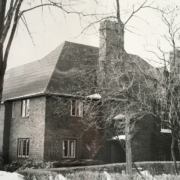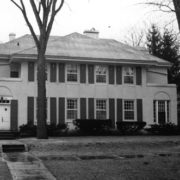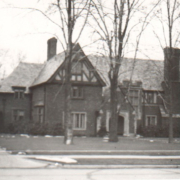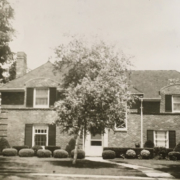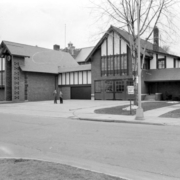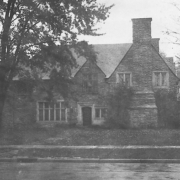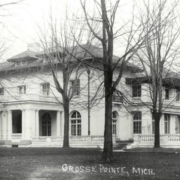Historical Architecture of Grosse Pointe – Woodland Place
Last week we stopped by 355 Lincoln, one of the most distinguished homes in Grosse Pointe City. The 8,700 sq ft English Manor was designed by the renowned New York based firm Alfred Hopkins & Associates for Dr. Theodore McGraw, Jr. The gardens were designed by legendary landscape architect Ellen Biddle Shipman. This week, in anticipation of the Grosse Pointe Historical Societies annual gala, to be held at 2 Woodland Place on June 22, we revisit the historic road of Woodland Place.
Woodland Place, once a heavily wooded area on the shores of Lake St. Clair, is a narrow street, paved with bricks, and home to several unique residences. Most of the homes, constructed in the 1920’s (5 in total), were built by just a handful of noted architects. What makes this road so unique is that each of these architects worked on a couple of projects on the street in varying degrees of complexity – from designing homes from scratch through to adapting homes to make them more suitable for modern living.
7 Woodland Place
The first home to be built on Woodland Place. It was completed in 1909, as a summer home for the Hazen S. Pingree family. Hazen S. Pingree was a four-term mayor of Detroit, a successful businessman, and the 24th Governor of the State of Michigan. The Pingree’s hired noted architect William B. Stratton, an innovative designer who has often been described as having a vigorous creative imagination with a diverse range and aptitude for switching between architectural styles. His design for 7 Woodland Place centered on the Dutch Colonial style, complete with gambrel rood and flared eaves.
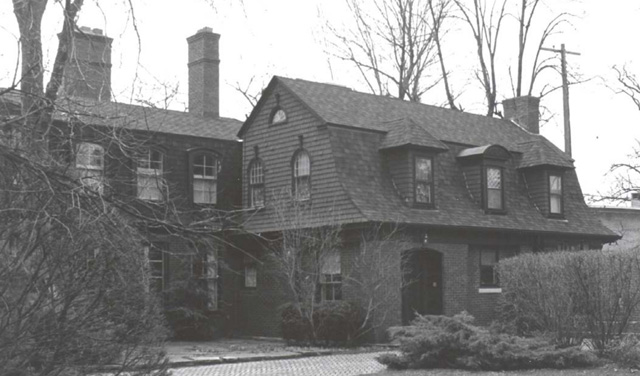
In 1935, the Pingree family hired Hugh T. Keyes to make their home more suitable for modern living. Research on Wikipedia explains the extensive alterations/additions Keyes made to the house tripled the size of the property, transforming it to over 5,200 sq ft. Upon completion the size of the some of the rooms had changed significantly, thus creating a large 17’ x 16’ sq ft foyer, 23’ x 17’ sq ft living room, 27’ x 16’ sq ft music room, and a 24’ x 16’ sq ft library with natural fireplaces. There were seven bedrooms in total, two of which had their own sitting rooms, while a further two bedrooms were used as maids’ quarters. The interior featured superb herringbone hardwood floors, 10ft ceilings, wood paneling, an elaborate semi-circular music room, and an elevator.
Research on Wikipedia also states that while Keyes retained the same brick construction he added a bow-fronted wing that wrapped around part of the original structure. The research also explains this was Keyes first use of a mansard roof (a prominent feature in his later work), which he combined with the original gambrel roof. Popular in 19th Century France, a mansard roof is characterized by two slopes on each of its sides, it can allow for additional habitable space, such as an attic to be incorporated. The addition of the new roofline significantly altered the appearance of the home and in essence changed its original architectural approach from Dutch Colonial to more of a French style. Keyes considered his work at 7 Woodland to be one of his more significant projects. Source: Wikipedia. You can read the full story of this home by clicking here.
4 Woodland Place
William B. Stratton and his partner Dalton Snyder created Stratton’s second project on the street. The fabulous 5,450 sq ft Colonial home, completed between 1920 – 1922, was commissioned by John R. Russel, a leader in Detroit industrial and financial circles. The house features high-beamed ceilings, intricate detailing throughout, and six bedrooms.
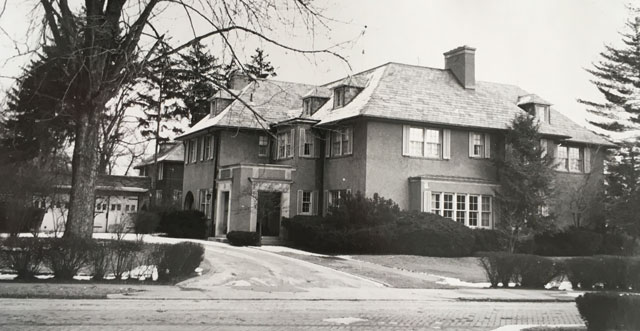
William Stratton and Dalton Snyder worked together from 1918 – 1925, and completed several homes in Grosse Pointe, including 365 University Place, 341 Lakeland, and 15366 Windmill Pointe.
1 Woodland Place
This handsome residence was completed in 1921, by the Detroit firm of Brown, Robert O. Derrick, and Preston for Dr. Walter R. Parker. At 9,050 sq ft it is the largest residence on the street. It is a stunning brick-built home with ornate limestone detailing on the front elevation – a typical trait of Robert O. Derrick’s work. During his career Robert O. Derrick played a pivotal role in helping transform the architectural scene in Grosse Pointe. During the 1920’s, he was a prolific architect in the community, specializing in creating large formal residences for prominent clientele who were looking for “something spectacular”.
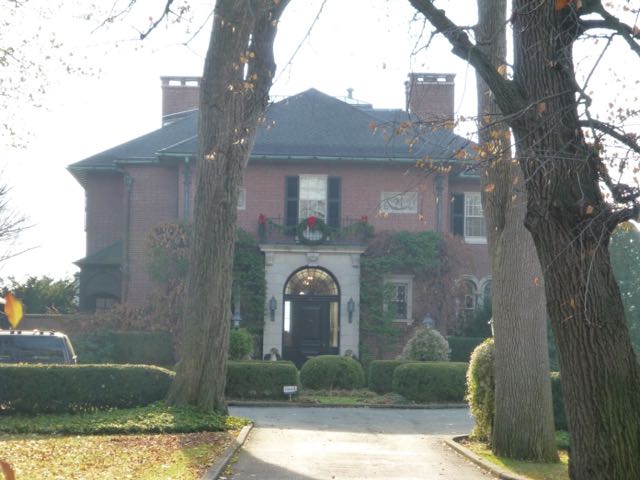
6 Woodland Place
Completed in 1925, this 4,876 sq ft home was created in an English architectural approach. It is believed the house was commissioned by John Wilbur Finkenstadt and was Robert O. Derrick’s second project on the street. We will be featuring the full story of this home soon.
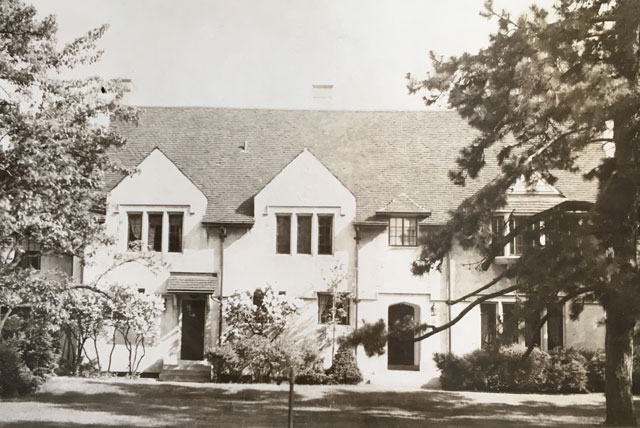
5 Woodland Place
Hugh McMillan commissioned Hugh T. Keyes to create his first project on Woodland Place. Completed in 1928, the 6,400 sq ft English style five-bedroom property features beautiful architectural detailing one would expect to find in a home designed by Keyes – wood paneling, a slate and wrought iron grand staircase, a spectacular foyer, wood beams, large decorative fireplaces, and a stunning central window above the main staircase.
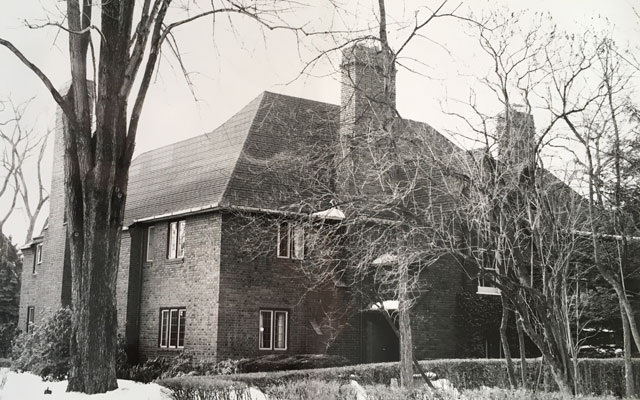
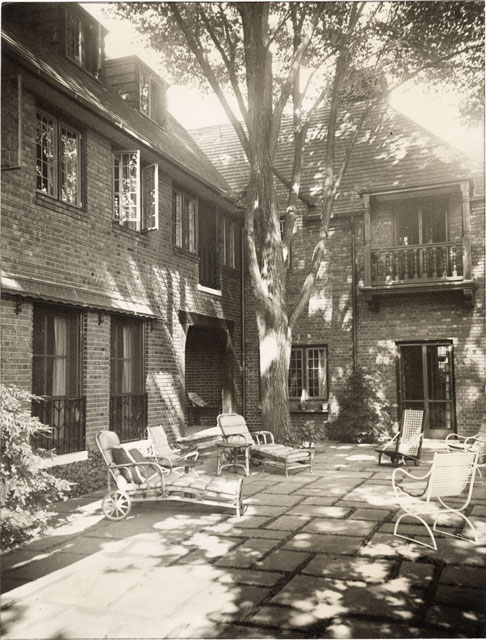
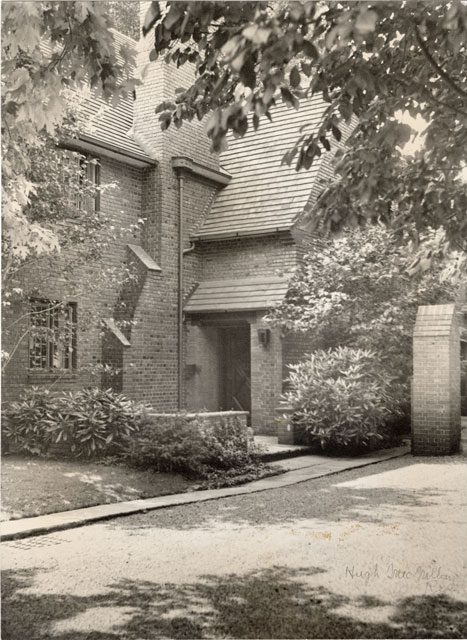
The main floor has a 21’ x 31’ sq ft living room, a paneled 16’ x 21’ sq ft library, a large 17’ x 21’ sq ft dining room, along with a 9’ x 15’ sq ft butler’s pantry, service stairs and a 10’ x 16’ covered terrace. The residence also includes a 3-car garage along with a carriage house that contains two bedrooms, a kitchen, and a family room. The carriage house is accessible from the main house and from a separate stairway.
Our files indicate the property was originally located on land with an extra lot measuring 122’ x 139’ sq ft. It appears when the house was listed for sale in 1977, the extra lot was as a separate listing that could not be sold before the house. The photos below show the entrance and the garden terrace – images courtesy of: digital collection, Detroit Public Library.
2 Woodland Place
The location of Grosse Pointe Historical Societies annual gala, 2 Woodland Place was completed in 1928. It was Robert O. Derrick’s third project on the street, a striking home designed in the Federal architectural style. It was commissioned by Florence T. Eddy, widow of Frank Woodman Eddy Frank Woodman Eddy – a prominent businessman in Detroit who had made his fortune from chemical and rubber manufacturing. We will be featuring the full story of this home next week.
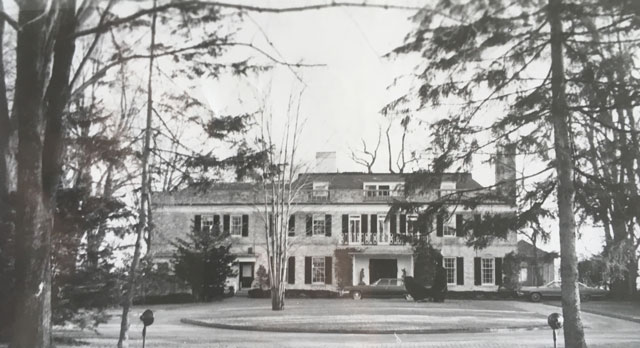
Woodland Place maybe a small street but it has a big personality – beautiful homes, commissioned by wealthy owners, designed by some of Detroit’s finest architects.
*Photos courtesy of the Higbie Maxon Agney archives unless stated.
** Research, information, and data sources are deemed reliable, but accuracy cannot be fully guaranteed.
Written by Katie Doelle
Copyright © 2023 Katie Doelle

